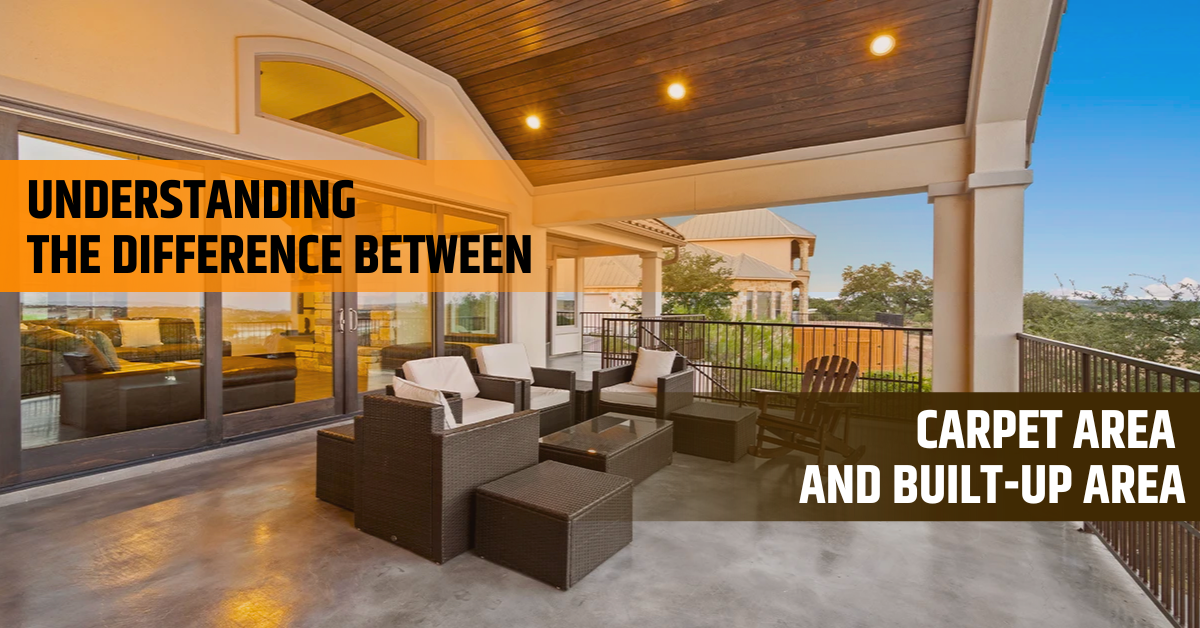
The most significant expenditures that many individuals make in their lifetimes are buying a home. Yet, real estate jargon around property size terms like super built-up area, carpet area, and built-up area can be confusing and even misleading if you do not fully understand them. Among these, the distinction between carpet and built-up areas is fundamental, as it directly impacts the usable space you get and the price you pay. The blog will guide you to understand these concepts in detail, empowering you to make informed decisions in your property journey.
What is Carpet Area?
The carpet area is where the entire usable floor space inside a property's walls is referred to as the carpet area. This space is exclusive to the owner and does not include the thickness of the inner or outer walls, terraces, balconies, and common areas like staircases and lifts.
|
What Does Carpet Include? |
What Does Carpeting Exclude? |
|
Bedrooms Living rooms Dining rooms Kitchens Bathrooms and toilets Store rooms |
Thickness of internal and external walls. Balconies and verandahs Terraces Area under service shafts Utility ducts |
Why is Carpet Area Important?
The most realistic depiction of a property's actual usable space is the carpet area. This figure is crucial for homebuyers as it defines the space available for daily living and furniture placement. Regulatory authorities like RERA (Real Estate Regulatory Authority) have mandated that developers disclose the carpet area to buyers, ensuring transparency and protecting consumer interests.
What is a Built-Up Area?
Built-up area refers to the total space that includes the carpet area, the thickness of internal and external walls, and semi-usable spaces such as balconies and terraces. It represents the total area covered by the property, including spaces that are not directly usable but are part of the structure.
|
What Does a Built-Up Area Include? |
What Does a Built-Up Area Exclude? |
|
Carpet area Thickness of internal and external walls Balconies Exclusive terraces Utility and service areas within the apartment |
Common areas outside the apartment Open spaces and gardens Parking spaces |
Why is the Built-Up Area Important?
The physical footprint of a property is delineated by its built-up area. Developers often quote the built-up area in advertisements because it is larger than the carpet area, making the property appear more spacious. However, buyers must remember that not all of this area is usable for daily living.
Why do Developers Use Built-Up Areas?
Developers use built-up areas because they appear larger than the carpet area. This practice can make properties seem more justified and spacious higher pricing. However, buyers should be cautious and always ask for the carpet area to understand the actual usable space they are getting.
RERA and Standardization of Carpet Area
The Real Estate (Regulation and Development) Act, 2016 (RERA) has brought much-needed clarity by defining carpet area as the net usable floor area of an apartment, excluding the area covered by internal partition walls of the apartment, but excluding the area covered by external walls. This legal definition ensures that buyers are not misled by inflated figures and can compare products on a like-for-like basis.
Conclusion
Navigating the world of real estate can be overwhelming, especially when faced with technical jargon like carpet area and built-up area. These terms are not just buzzwords, they are fundamental measurements that influence everything from the price you pay to the space you get to use in your new home.


.png)


3 Comments